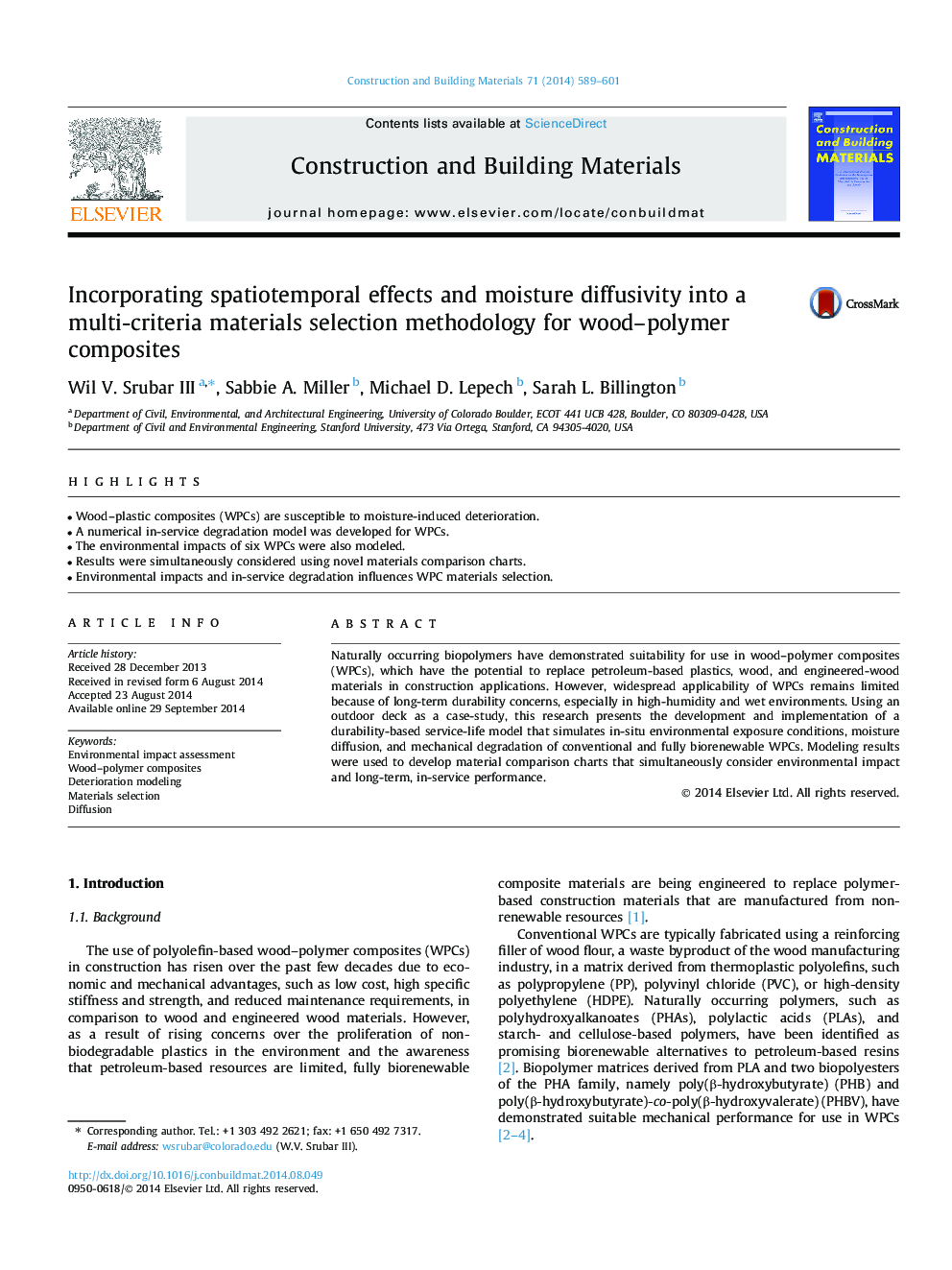| Article ID | Journal | Published Year | Pages | File Type |
|---|---|---|---|---|
| 257320 | Construction and Building Materials | 2014 | 13 Pages |
•Wood–plastic composites (WPCs) are susceptible to moisture-induced deterioration.•A numerical in-service degradation model was developed for WPCs.•The environmental impacts of six WPCs were also modeled.•Results were simultaneously considered using novel materials comparison charts.•Environmental impacts and in-service degradation influences WPC materials selection.
Naturally occurring biopolymers have demonstrated suitability for use in wood–polymer composites (WPCs), which have the potential to replace petroleum-based plastics, wood, and engineered-wood materials in construction applications. However, widespread applicability of WPCs remains limited because of long-term durability concerns, especially in high-humidity and wet environments. Using an outdoor deck as a case-study, this research presents the development and implementation of a durability-based service-life model that simulates in-situ environmental exposure conditions, moisture diffusion, and mechanical degradation of conventional and fully biorenewable WPCs. Modeling results were used to develop material comparison charts that simultaneously consider environmental impact and long-term, in-service performance.
